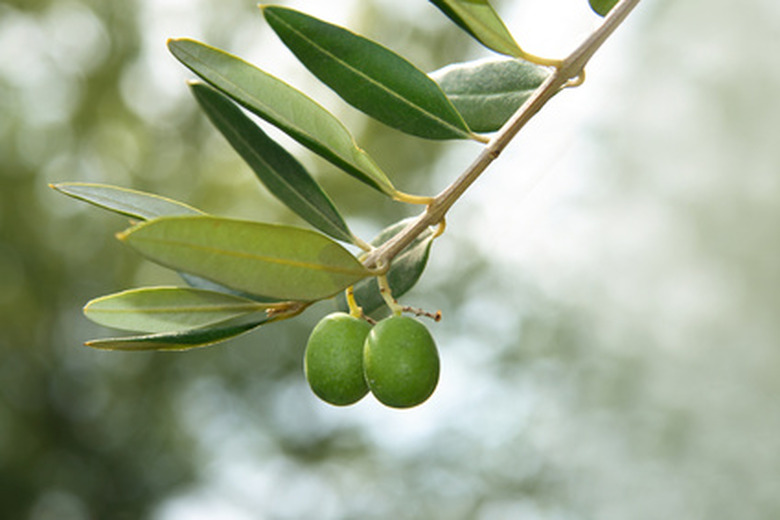How To Transplant Olive Trees
Things Needed
- Shovel
- Container-grown olive tree
- Pruning shears
- Water
Olive trees will only grow when daytime temperatures exceed 70 F. The warm weather trees will die back to ground when freezing temperatures are below 10 F. According to University of California Cooperative Extension, container-grown trees are transplanted when the seedlings range from 1 1/2 to 5 feet tall. Container-grown trees larger than this are root bound and not actively growing. Moving a larger olive tree from one location to another will not be successful. The large root system cannot be removed intact from the soil. The move will kill the vulnerable tree.
Step 1
Dig the transplant hole slightly larger than the container of the olive tree seedling. Remove all rock and errant roots from the native soil.
- Olive trees will only grow when daytime temperatures exceed 70 F. The warm weather trees will die back to ground when freezing temperatures are below 10 F. According to University of California Cooperative Extension, container-grown trees are transplanted when the seedlings range from 1 1/2 to 5 feet tall.
- The large root system cannot be removed intact from the soil.
Step 2
Pull the olive tree from the container. If roots are winding around the exterior of the root ball, prune the roots. Keep the root ball intact.
Step 3
Place the olive tree seedling slightly higher in the hole than the surrounding grade. Build up the soil on top of the root ball about an inch. Do not add any materials to the soil such as compost, nursery topsoil or other amendments. The olive tree seedling roots must grow out into the native soil. Any soil amendments will cause the young tree to act as if it's in a container.
- Pull the olive tree from the container.
- Any soil amendments will cause the young tree to act as if it's in a container.
Step 4
Irrigate the soil around the new transplant thoroughly. This will remove any air from around the roots and improve the native soil contact.
Step 5
Utilize a method of irrigation that will deliver water to the tree when the soil becomes dry. Apply 4 inches of water per irrigation period. Typically an irrigation system that will emit 0.10 to 0.20 inches of water per hour will be left on for 20 hours. Allow the soil to dry out between waterings.
Step 6
Keep all weeds 36 inches from the growing tree trunk. Weeds will compete with the tree for water and nutrients.
- Irrigate the soil around the new transplant thoroughly.
- Utilize a method of irrigation that will deliver water to the tree when the soil becomes dry.
Tip
Conduct a soil test for the area of the olive tree seedlings. Consult your local agricultural extension service for soil test processes and fertilization requirements of the soil in your area and climate.
Warning
Fertilize the olive tree transplant only after new growth emerges from the upper limbs. Prematurely fertilizing a new tree seedling will burn and kill the roots.
